INTRODUCTION
Recently the RH (Restoration Hardware) CEO created headlines with these comments, “We’re not actually guiding demand. I just wanted to give you color that there has been a change. And there’s also one of the biggest dislocations between demand and revenues. I think it’s going to be that way for everybody…”
In our previous installation (see “Is Macro Driving the Market”), we discussed four consistent challenges and how Consumer Trend data can be used to understand macro impact such as consumer purchasing decisions, adjustments to infection rates, lockdown responses, and impact of inflation.
As we move beyond COVID-Dominated news cycles (new variants permitting), similar macro-questions remain, but with focus shifting on a revolving set of categories impacting normalized recovery spend...how it might fare with low employment, higher prices, and the new heightened macro risk of war and resulting shortages. Within these segments are significant divergences in sectors and individual names opening opportunity for relative outperformance.
In this update we will share three observations:
-
Challenging Market Backdrop and Macro Focus General sentiment often creates one-size-fits-all assumptions leading to missed opportunities which highlight the importance of hypothesis testing.
-
Diverging Sectors Demand destruction or…shifting consumer priorities. A look at retail vs. travel.
-
Next Opportunities Finding potential for incremental acceleration (or retrenchment) in key categories isolating winners and losers.
Challenging Market Backdrop and Macro Focus
General sentiment often creates one-size-fits-all assumptions leading to missed opportunities which highlight the importance of hypothesis testing.
Quick Thoughts
In the first chart, below, we can see the percentage of firms expecting economy to improve has dropped to its lowest level in roughly 40 years, suggesting a very cautious outlook primarily due to low visibility and large macro questions. While this may prove too negative, the market is moving in a fast and volatile fashion. Using data is not as important in trying to call the outcome of a short term quarter, as it is to prove or disprove a thesis on consumer behavior. These outcomes are quickly rotating the list of expected winners and losers depending on macro updates.
As we will see in our next examples, a simply negative overtone about the market risks assuming all consumer spend is alike. However, consumers are actually prioritizing certain types of spend relative to others, meaning continued rotation in how a thesis is fairing relative to shifting opinions. While these challenges are substantial, we can test many of these hypotheses and answer many underlying questions using web traffic, hiring data, and Consumer Trend data. This approach allows us to separate fact from fiction and discern actual buyer intent.
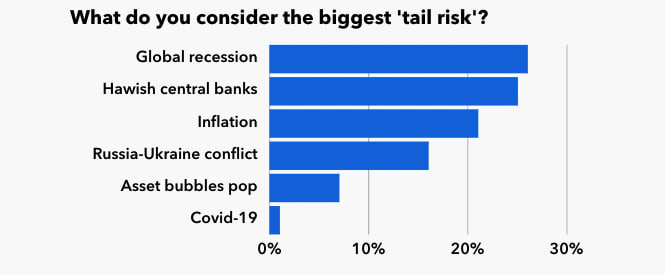
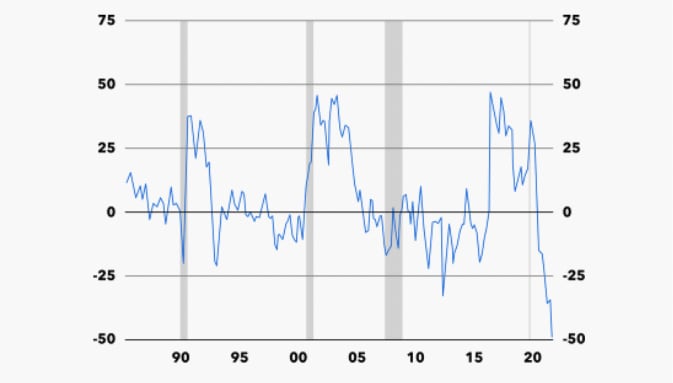
Diverging Sectors
Demand destruction or…shifting consumer priorities. A look at retail vs. travel.
As we can see from the Specialty Retail consumer spending trends, we can observe over recent months the dislocation between demand and previous strength in performance.
However, while the Travel sectors are still recovering from the lows over last two years, the uptrend is continuing. Recent Airline reports have underlined this as well despite prices increasing nearly 25% y/y in the US.
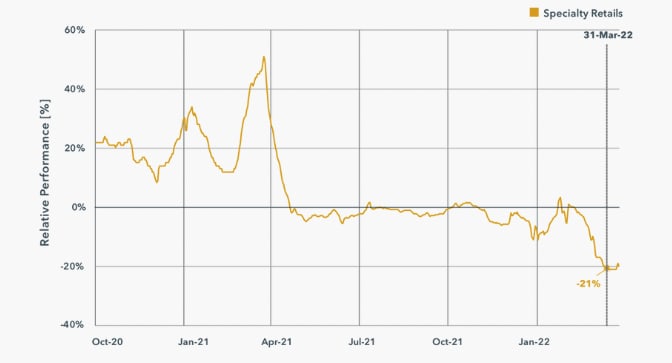
Chinese travelers, a demographic who has historically prized leisure and entertainment travel, are still in lockdown. Will they provide continued tailwinds in these segments when/if travel restrictions ease? Often these trends have coincided with some of the longest hotel and resort stays, which bodes particularly well for these recovering beneficiaries.
Next Opportunities
Finding potential for incremental acceleration (or retrenchment) in key categories isolating winners and losers.
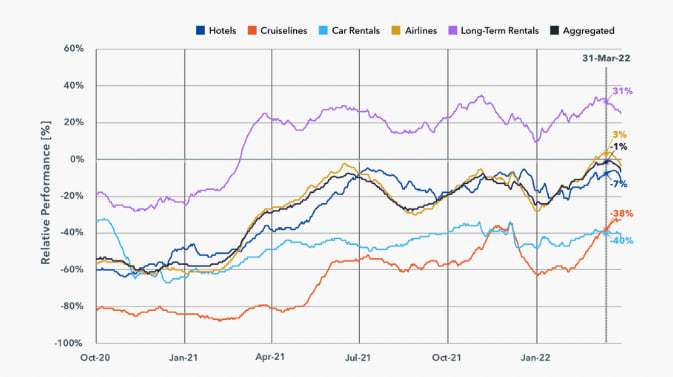
Given the significant questions and market headwinds outlined in our first two charts, we believe the challenges and opportunities for consumers (and for the analyst community) will continue to rage throughout the year.
As one may expect, seasons of extended high volatility expose the robustness of business models and effectiveness of management teams as underlying assumptions are put to the test. How do business models and management teams hold up in ‘outlier’ seasons, when they should be the most robust and effective?
Where is the opportunity for investors in all of this? The conditions described above magnify divergences between business models and management teams in their ability to anticipate and respond to market trends. Where divergences may have been previously minor or unnoticeable, now they can be significant, revealing potential opportunities within market or industry subsectors that defy market-wide or industry-wide prevailing assumptions. Converging events, such as upcoming holidays (Passover/Easter), market share shifts, and pricing power (or lack thereof), reinforce how critical it is to test our assumptions and not make blanket statements about a market or industry.
In the final chart (below), we are showing the relative performance spreads of five names within the specialty retail sector, which may otherwise have been overlooked due to assumptions about total sector rotation. However, by looking under the surface at individual company fundamentals, we can see inflections and relative divergence in performance. We are happy to discuss these details if of interest, and connect you to our analytics tooling partners for further review.
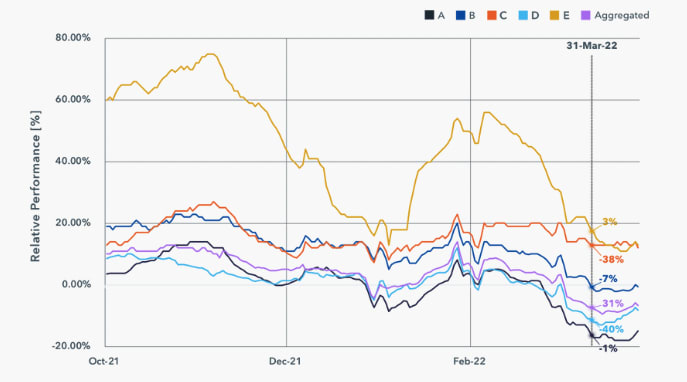
Tools We Are Using to Draw Signals from the Noise
Envestnet | Yodlee Consumer Trends
The Yodlee Aggregate Product includes de-identified information derived from 3M+ underlying active users after stringent selection criteria is applied and all identifying personal information is removed. Normalization techniques are applied across the full history beginning in 2014. There are ~500 tickers currently included in the feed and over 3,000 distinct merchants. The panel periodically expands with the addition of new financial institutions.
Payroll Analysis Coverage for 4,600+ employers, reflecting 1,100+ tickers and 3,000+ private companies, Able to identify Weekly, Monthly, Quarterly paycheck periodicities. Maiden Century’s IDEA (Integrated Dashboard for Everything Analyzable) is a data visualization/discovery/analytics platform.
With the vast amount of Yodlee data available, Maiden Century’s IDEA Platform provides a game changing, cloud-based platform for analytical users. After nearly ten years in the making, encompassing 200,000+ man hours of research and programming, the interface provides seamless data ingestion, evaluation, back-testing, modeling, quality assurance, visualization out of the box. IDEA provides an intuitive and robust-featured UI that helps predict future events and trends. How are you developing your core key performance indicators, hypothesis testing, and decision processes?
Give us a call
There are bold new tools available for your transition to a process-driven approach. Anduril Partners — in conjunction with its data and software partners — have developed processes and roadmaps which can guide your journey and cut time to value from years to hours.
We look forward to the discussion.
